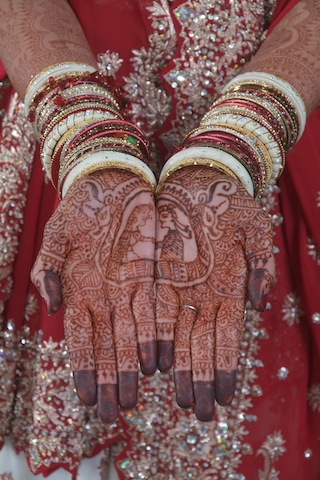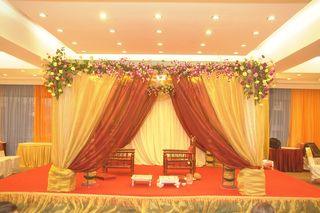The Traditional Culture of India
The Traditional Culture of India defines many Indian People
The traditional culture of India defines many of the people of India. No Joke! Many of the rituals, cultural practices, celebrations, food recipes, and deeply held beliefs of the Indian culture come from the rituals, practices, and beliefs of ancient India. Everything from the architecture of the beautiful marble temples to the amazingly colorful clothing worn by people of India have some connection to ancient India.
The delicious food of India often comes from recipes that have been passed down through many generations. The Indian people know that the cultural traditions that have been passed down to them through generations of their family are critical to their identity and to fabric of their country. The traditional culture of India is what makes the culture of the country so unique and beautiful!
Art created by the people of India is incredible too! The Indian people are well known for creating some of the best textiles, rugs, clothing, marble and ceramic products, and paintings in the world! Another form of art that Western Cultures cannot compete with is the gold jewelry worn in India. Indian gold is typically in the 22 to 24 karat range. In the United States, we typically don't see much jewelry above 18 karats. When I first saw 23 karat gold, I could not believe the gorgeous color and the way that it shone in the light!
The Traditional Culture of India and Indian Weddings

Marriage is a huge deal anywhere, but traditional Indian wedding ceremonies usually last for three or more days in India. Typically, an Indian wedding includes one pre-wedding day where family and friends gather to socialize, eat together, and prepare for the wedding. This is the day when women in the wedding party typically receive Henna tattoos (see the picture above that showcases a bride's Henna). The second day is normally the actual wedding day, and the third day is typically a day of celebration and dance.
Arranged marriages have long been a part of Indian Culture. Although it is more common now for love marriages to take place nowadays, arranged marriages have been an important part of the traditional culture of India for centuries. Love marriage meaning when a couple meets one another naturally, falls in love, and decides to get married. This is what most of the world is accustomed to. What is an arranged marriage you ask?
An arranged marriage is one where parents of a young man or woman collaborate, plot, and plan the marriage of their child with the parents of another young man or woman. In arranged marriages, parents, not their children to be married, decide who their child should marry. An arraigned marriage occurs when one family determines that another family is a good overall match for their son or daughter. The couple may meet one another briefly before the marriage is decided, but in some cases, the couple barely knows one another before they tie the knot. This once very popular custom has carried on for hundreds of years, but now couples often meet each other and approve their own marriages, with their parents' input.
In the traditional culture of India, an engagement may occur when the mother and father of the bride-to-be meet the future husband to be. They provide the prospective husband with an offering, such as money and a coconut, to show their approval for the unity. This is will offer a show of acceptance and good faith. At this point the man and woman are engaged to be married.
Funny story; when I met my Indian wife's parents, they approved of me and gave me a coconut and money. This was the first time that they met me. My wife and I did not realize that we had just become engaged. Although Indian, my wife had no idea what it meant for me to be given these things. As a result of our ignorance of this traditional Indian cultural, I later decided to propose to my wife and I asked her father for permission. He granted me permission but looked rather confused at me because he had already given me permission. He probably thought it was silly an unnecessary for me to ask for permission because permission was already granted.
Even the ceremonies that lead up to an Indian wedding in traditional India culture can be as big as an entire western wedding! Ceremonies like Garba are common before or after weddings. Garba is a celebration of dance that typically includes live music, food and a special type of dance performed with decorative sticks. The Garba for our wedding had roughly 300 participants, fireworks, live music, food and dancing.

The Traditional Culture of India and the Family Dynamic
As mentioned earlier, arranged marriages were once the way things were done, but things have changed in India cultue today! For example, my wife and I met each other while attending college in the United States.
The Indian family culture is traditionally based on a patriarchal structure. The oldest man in the home, or family system, is looked to for advice and guidance and also receives the greatest amount of respect. The women traditionally play the role of preparing meals and raising the children, but nowadays women commonly have jobs and earn money too.
In India, the sons typically wed and start their new family in their parents home. The daughters leave their parents home to live with their new husband's family. In some cases, women move from India to the United States and may see family members very rarely, if ever again.
In the traditional culture of India, when a son's father and mother enter retirement, he is to allow them to live with him and to take care of them. Parents may transfer their real estate property to their sons after they retire and this is where they all live. So basically, the financial burden changes hands. There are many variations of how this arrangement occurs nowadays.
When generations live together, the family dynamic also changes because the sons now have families of their own; so, it's a full house! One generation dies and another is born which follows the Dharmic cycle of life, which is prevalent in the Hindu belief structure.
Things can be a bit different for Indian family members living in the United States. My wife's grandparents, for example, have two sons that live in different parts of the country. Her grandparents float between their children's homes equally throughout the year. My wife's grandparents spend half the year at one son's home, and the other half year at their other son's home.
Obviously, different individual circumstances will always alter the aspects of traditional India culture that each family practices, but the concept of strong family adhesion and Dharma should be constant. Learn more about the culture of India. Discover what it's like in India today. Visit our homepage to continue exploring India.


